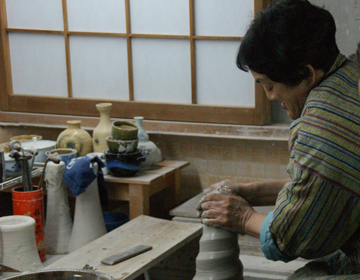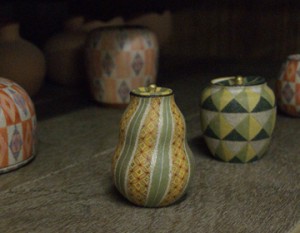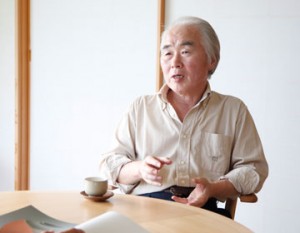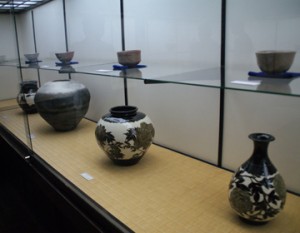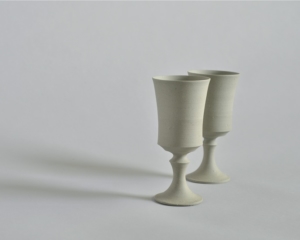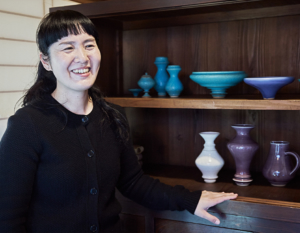”Kizeto” ceramics made at a small kiln
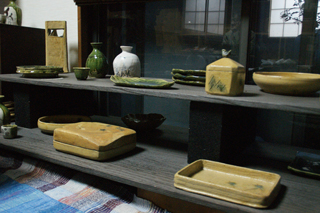
Ceramics made by Sachiyo Komatsu are what is called ”Ki (yellow) Zeto”. This is the pottery that was made in the Momoyama period, mainly in Mino area. Kizeto is baked after painting a yellow glaze, and one of its features is the comb-like pattern applied to it. Copper green color floating on the yellow base tightens the impression, and gives dignity.
Komatsu graduated from Musashino Art Junior College, and then trained herself in the Kasama area. After studying under her master Shinichi Watanabe, she set up her own workshop and kiln in Kayano City. While making her original ceramics, she kept studying under Sakusuke Kato, a famous Seto Ceramics craftsman, to hone her skills. Her works have won many prizes in Traditional Japanese Crafts Exhibition and Japan Ceramic Art Exhibition, and are highly praised.
Using soil as it is

Nakata was able to try turning the pottery wheel at the workshop. Nakata noticed, ”the soil feels a little rough.” ”I don’t tamper much with the clay. I like to use the original soil as it is. It feels more rough than soil that has been cleaned and purified.” Komatsu explained.
She has been fascinated by Momoyama Kizeto, and still continues to pursue it. However, as she said, ”I want to make ceramics that can be used in modern lifestyle”, many of her works are not too formal and are fit for everyday use. The patterns and copper green paint are not too harsh, and you can feel the warmth of ceramics from her works.
Rindo No Kama was a workshop surrounded by lush nature. The ceramics produced here seem to express the severity and friendliness of Nagano’s nature all at once.



